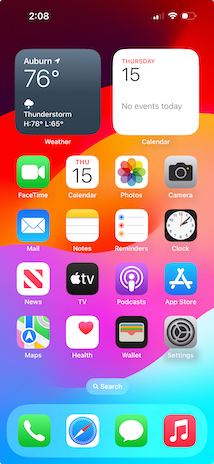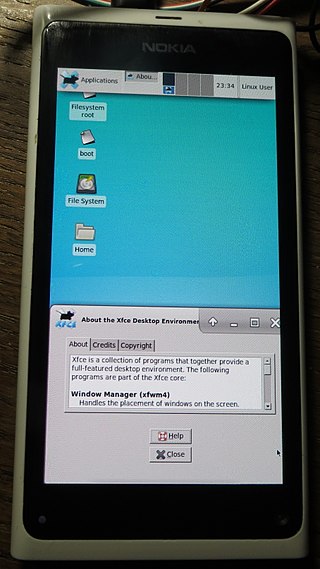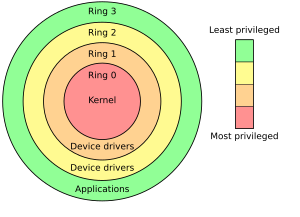An exploit is a piece of software, a chunk of data, or a sequence of commands that takes advantage of a bug or vulnerability to cause unintended or unanticipated behavior to occur on computer software, hardware, or something electronic. Such behavior frequently includes things like gaining control of a computer system, allowing privilege escalation, or a denial-of-service attack. In lay terms, some exploit is akin to a 'hack'.
A rootkit is a collection of computer software, typically malicious, designed to enable access to a computer or an area of its software that is not otherwise allowed and often masks its existence or the existence of other software. The term rootkit is a compound of "root" and the word "kit". The term "rootkit" has negative connotations through its association with malware.
A softmod is a method of using software to modify the intended behavior of hardware, such as video cards, sound cards, or game consoles in a way that can overcome restrictions of the firmware, or install custom firmware.
Code injection is the exploitation of a computer bug that is caused by processing invalid data. The injection is used by an attacker to introduce code into a vulnerable computer program and change the course of execution. The result of successful code injection can be disastrous, for example, by allowing computer viruses or computer worms to propagate.
In computer security, arbitrary code execution (ACE) is an attacker's ability to run any commands or code of the attacker's choice on a target machine or in a target process. An arbitrary code execution vulnerability is a security flaw in software or hardware allowing arbitrary code execution. A program that is designed to exploit such a vulnerability is called an arbitrary code execution exploit. The ability to trigger arbitrary code execution over a network is often referred to as remote code execution (RCE).
In software development, time-of-check to time-of-use is a class of software bugs caused by a race condition involving the checking of the state of a part of a system and the use of the results of that check.

iOS is a mobile operating system developed by Apple Inc. exclusively for its smartphones. It was unveiled in January 2007 for the first-generation iPhone, launched in June 2007.

The Pwnie Awards recognize both excellence and incompetence in the field of information security. Winners are selected by a committee of security industry professionals from nominations collected from the information security community. Nominees are announced yearly at Summercon, and the awards themselves are presented at the Black Hat Security Conference.
On Apple devices running iOS and iOS-based operating systems, jailbreaking is the use of a privilege escalation exploit to remove software restrictions imposed by the manufacturer. Typically it is done through a series of kernel patches. A jailbroken device permits root access within the operating system and provides the right to install software unavailable through the App Store. Different devices and versions are exploited with a variety of tools. Apple views jailbreaking as a violation of the end-user license agreement and strongly cautions device owners not to try to achieve root access through the exploitation of vulnerabilities.
blackra1n is a program that jailbreaks versions 3.1, 3.1.1 and 3.1.2 of Apple's operating system for the iPhone and the iPod Touch, known as iOS.
Rooting is the process by which users of Android devices can attain privileged control over various subsystems of the device, usually smartphones. Because Android is based on a modified version of the Linux kernel, rooting an Android device gives similar access to administrative (superuser) permissions as on Linux or any other Unix-like operating system such as FreeBSD or macOS.

The hacking of consumer electronics is an increasingly common practice that users perform to customize and modify their devices beyond what is typically possible. This activity has a long history, dating from the days of early computer, programming, and electronics hobbyists.
Mobile security, or mobile device security, is the protection of smartphones, tablets, and laptops from threats associated with wireless computing. It has become increasingly important in mobile computing. The security of personal and business information now stored on smartphones is of particular concern.
The Pangu Team, is a Chinese programming team in the iOS community that developed the Pangu jailbreaking tools. These are tools that assist users in bypassing device restrictions and enabling root access to the iOS operating system. This permits the user to install applications and customizations typically unavailable through the official iOS App Store.
Rootpipe is a security vulnerability found in some versions of OS X that allows privilege escalation whereby a user with administrative rights, or a program executed by an administrative user, can obtain superuser (root) access. This is considered problematic as the first user account created under OS X is furnished with administrator rights by default. By leveraging other security vulnerabilities on a system, such as an unpatched web browser, rootpipe could be used by an attacker to help gain complete control of the operating system.

System Integrity Protection is a security feature of Apple's macOS operating system introduced in OS X El Capitan (2015). It comprises a number of mechanisms that are enforced by the kernel. A centerpiece is the protection of system-owned files and directories against modifications by processes without a specific "entitlement", even when executed by the root user or a user with root privileges (sudo).
PP Jailbreak, also commonly known as PP, PP25 App or PP25 Jailbreak, is a term describing a free Chinese app containing tools capable of jailbreaking iOS 8 devices, except for Apple TV. Eligible products include: iPod Touch, iPhone and iPad. This app was developed by a Chinese iOS hacking community known as PP Assistant. It was first released on January 19, 2015

Dirty COW is a computer security vulnerability of the Linux kernel that affected all Linux-based operating systems, including Android devices, that used older versions of the Linux kernel created before 2018. It is a local privilege escalation bug that exploits a race condition in the implementation of the copy-on-write mechanism in the kernel's memory-management subsystem. Computers and devices that still use the older kernels remain vulnerable.
iBoot is the stage 2 bootloader for all Apple products. It replaces the old bootloader, BootX. Compared with its predecessor, iBoot improves authentication performed in the boot chain.

Meltdown is one of the two original transient execution CPU vulnerabilities. Meltdown affects Intel x86 microprocessors, IBM POWER processors, and some ARM-based microprocessors. It allows a rogue process to read all memory, even when it is not authorized to do so.








